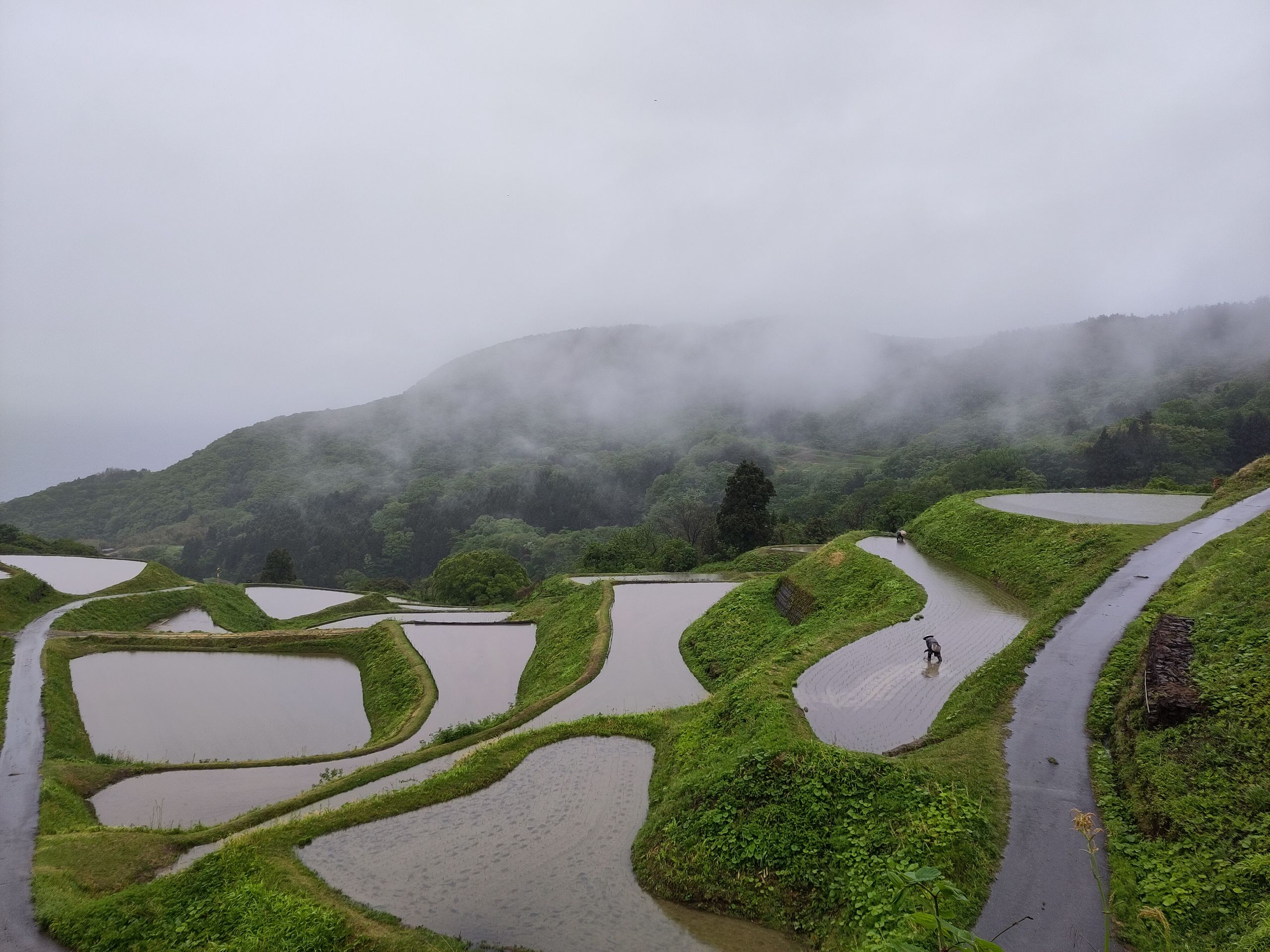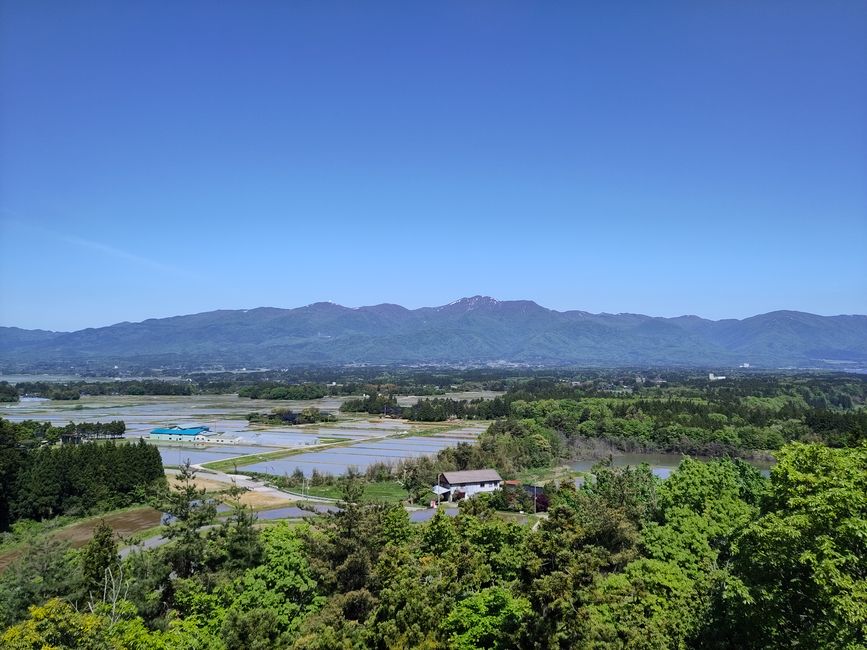Sado - Toki-Terrace and Chokokuji-Temple
उजवाडाक आयलां: 27.05.2023
Our group starts this morning with the Toki Rehabilitation Center. Since 2008, Toki, also known as Nippon Ibis, have been bred and released there. Toki are white and pink-orange ibises, birds about the size of herons. They feed on small creatures in rice fields, such as frogs and insects. Due to the use of pesticides, habitat pollution, and hunting for their beautiful feathers, the birds became extinct in the wild in 1981. There were a few remaining individuals in zoos, and some of them were brought to Japan and merged with the last captured birds in Sado. Toki have been bred since 1999 and released since 2008, with noticeable success. Today, over 500 of them live in Sado. From an observation point, we can see the roof of the enclosure and observe the Toki there with a controllable camera. Visitors are not allowed near the enclosure to avoid subjecting the birds to the stress of many people, as in a zoo. Inside the enclosure, the staff cultivate rice to acclimate the birds to foraging for food in rice fields. After the brief presentation, we go to the observation platform and can actually see some Toki in the rice fields. They currently have dark-colored heads to better camouflage themselves during the breeding season. A bright pink bird would indeed stand out in the forest. Under the observation platform, there is a small information room with current population information and methods for protecting the Toki. There are also some binoculars available for searching for them in the rice fields.
We continue by bus to Chokokuji Temple. This temple was once famous for its rabbits. The rabbits would eat the weeds and, in the process, entertain many visitors. But at some point, someone found a single dead baby rabbit and posted a picture on Twitter. Everyone who knows Twitter knows what happened next. So, the temple had to give away all the rabbits, and now they're probably much better off with some little girl all alone in her bedroom. Well, enough about the rabbits; there aren't as many of them here anymore. We have lunch here, and the temple's monk guides us through all the rooms. He has something to say about each room. One room is said to be haunted, in front of one statue, you must not turn your back, and another statue can only be opened once every 33 years, otherwise, you'll go blind. But the blindness can be cured in another room. In the garden, he shows us a cave sealed with a large stone. This cave is the tomb of a monk who once lived in the temple and entered the cave alive but never came out. Especially when he shows us the place where he wants to dig his own cave, you realize he might be a little crazy. He always runs so quickly from one room to another or simply disappears somewhere for half an hour, as if he can teleport or something. Chris, the leader of World-Unite, thinks he's probably the ghost he told us about. After this very interesting tour of the quite large temple, we spend about an hour sweeping all the rooms he showed us and then head back. Fortunately, with 20 people, we finish quickly.
We continue by bus to Chokokuji Temple. This temple was once famous for its rabbits. The rabbits would eat the weeds and, in the process, entertain many visitors. But at some point, someone found a single dead baby rabbit and posted a picture on Twitter. Everyone who knows Twitter knows what happened next. So, the temple had to give away all the rabbits, and now they're probably much better off with some little girl all alone in her bedroom. Well, enough about the rabbits; there aren't as many of them here anymore. We have lunch here, and the temple's monk guides us through all the rooms. He has something to say about each room. One room is said to be haunted, in front of one statue, you must not turn your back, and another statue can only be opened once every 33 years, otherwise, you'll go blind. But the blindness can be cured in another room. In the garden, he shows us a cave sealed with a large stone. This cave is the tomb of a monk who once lived in the temple and entered the cave alive but never came out. Especially when he shows us the place where he wants to dig his own cave, you realize he might be a little crazy. He always runs so quickly from one room to another or simply disappears somewhere for half an hour, as if he can teleport or something. Chris, the leader of World-Unite, thinks he's probably the ghost he told us about. After this very interesting tour of the quite large temple, we spend about an hour sweeping all the rooms he showed us and then head back. Fortunately, with 20 people, we finish quickly.
जाप

प्रवास अहवाल जपानांत


